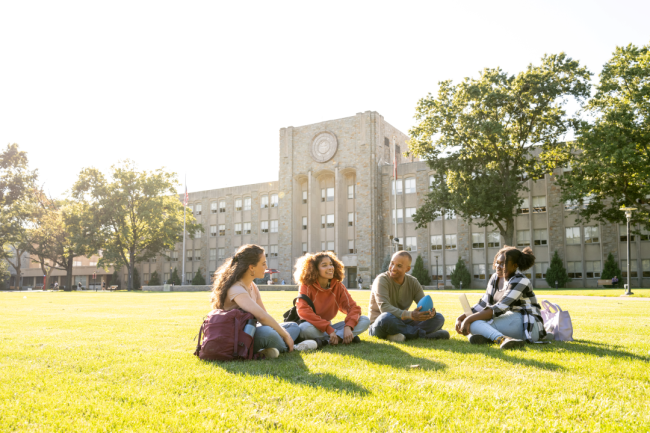You have /5 articles left.
Sign up for a free account or log in.

Four-year colleges and universities can redesign institutional policies and practices to better support transfer students as they matriculate.
ferrantraite/E+/Getty Images
Nationally, over 80 percent of new, associate degree–seeking community college learners intend to transfer, but only 31 percent ever transfer to a four-year institution, and just 13 percent complete a bachelor’s degree within six years, according to data from the National Student Clearinghouse Research Center.
Many transfer students experience overly complicated and ineffective transfer systems through a set of barriers they must overcome, largely on their own.
A November report from the Campaign for College Opportunity, “Advancing Equity With Effective Community College Transfer Pathways,” reveals major barriers created by institutional policy, ways college leaders can address those barriers and considerations for policy leaders.
Credit Transfer Concerns
A 2017 U.S. Government Accountability Office study found students, on average, lost 43 percent of their credits when they transfer. This rate was lower for those transferring between public institutions (37 percent) but higher for privates and astronomical for those moving between a for-profit and public school (94 percent).
Credit loss amounts in additional time to degree completion and added costs for students, something many learners hope to mitigate in the first place by completing community college courses.
“For the community college transfer pathway to realize its potential for advancing equity, state and college leaders must remove major barriers to transfer student success that disproportionately impact students who are from marginalized backgrounds,” the report says.
The two greatest barriers to success are a lack of clear transfer pathways and a lack of comprehensive advising support, particularly for Latino, Black, Asian American and Native Hawaiian/Pacific Islander or American Indian and Native American transfer students.
Recommendations: To remove obstacles impeding successful transfer between two- and four-year institutions without credit loss, the report details six improvements:
- Create major-specific transfer pathways. Rather than having college students enroll in general education courses, major-specific transfer articulation agreements should specify the exact pre-major, lower-division courses to ensure all credits earned apply to a student’s bachelor’s degree program of interest.
- Strengthen transfer partnerships. Institutions that have transfer agreements should invest in the relationship, including establishing resources for transfer students, tracking transfer outcomes as part of key metrics and making transfer success a priority in strategic planning. Faculty and academic leaders should also be in alignment to ensure transfer students are equipped for their educational experiences beyond two-year institutions.
- Redesign community college onboarding and advising. Many prospective transfer students receive limited advising or are encouraged to take general education courses, which does not benefit them in moving toward a bachelor’s program or their desired field of study. Community colleges can improve student outcomes by prioritizing advising—which can mean reducing adviser caseloads, organizing advisers by fields of study or by creating deeper relationships with advisees to ensure they are getting what they want out of their educational experience.
- Provide additional support to minoritized students. While many college students struggle with making it through the transfer gateway, underrepresented minority students are even less likely to do so successfully. To mitigate this problem, institutions should create targeted policies, practices and supports that benefit Black and Latino students, such as California’s Umoja Community and Puente Project. Creating an inclusive environment that acknowledges students’ lived experiences can promote belonging and academic success.
- Implement dual admissions. Beyond creating transfer pathways, two- and four-year colleges can create concurrent or guaranteed admissions programs to build on a student’s bachelor’s degree program pathway, starting while they are enrolled at community college. The University of Central Florida’s DirectConnect program, for example, provides dual admission to six partnering community colleges, and each participant receives individual coaching and advice.
- Create a transfer-receptive culture. Beyond helping students get in the door with bureaucratic processes, investing in transfer students as people with goals and ambitions can help them earn a four-year degree. Recognizing the achievements of transfer students, using data to share their successes and creating identify-affirming spaces can make campus safer and more inclusive for students, particularly those from racial minority backgrounds.
Get more content like this directly to your inbox every weekday morning. Subscribe here.




